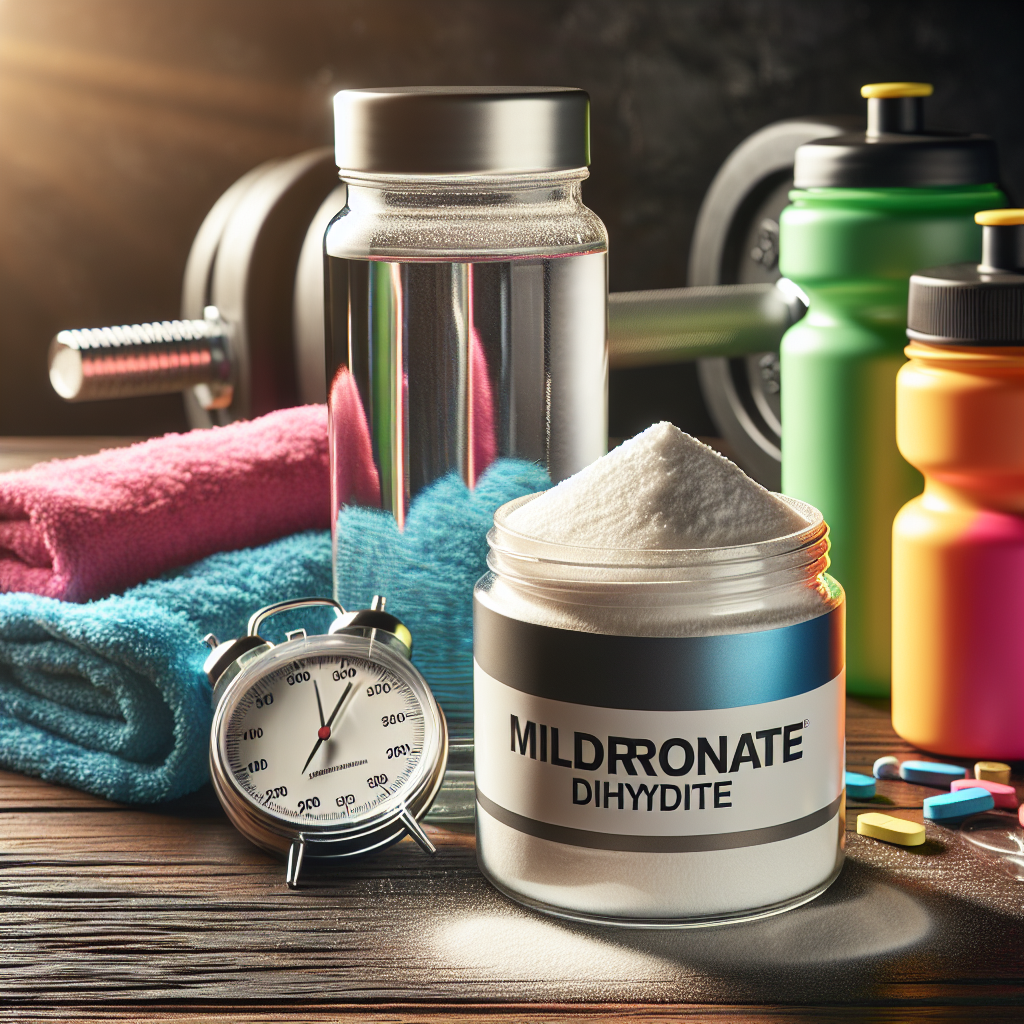-
Table of Contents
Mildronate Dihydrate as a Sports Supplement
Sports supplements have become increasingly popular among athletes and fitness enthusiasts looking to enhance their performance and achieve their goals. With a wide range of options available on the market, it can be overwhelming to determine which supplements are safe and effective. One supplement that has gained attention in recent years is Mildronate dihydrate, also known as Meldonium. In this article, we will explore the pharmacokinetics and pharmacodynamics of Mildronate dihydrate and its potential benefits as a sports supplement.
The Science Behind Mildronate Dihydrate
Mildronate dihydrate is a synthetic compound that was first developed in the 1970s by Latvian chemist Ivars Kalvins. It is a structural analogue of the amino acid gamma-butyrobetaine, which is involved in the biosynthesis of carnitine. Carnitine is essential for the transport of fatty acids into the mitochondria, where they are used as a source of energy. Mildronate dihydrate works by inhibiting the enzyme gamma-butyrobetaine hydroxylase, leading to an increase in carnitine levels in the body.
Studies have shown that Mildronate dihydrate has a half-life of approximately 3-6 hours and is primarily excreted through the kidneys. It is important to note that Mildronate dihydrate is not approved by the FDA for use in the United States and is banned by the World Anti-Doping Agency (WADA) for use in competitive sports.
Pharmacokinetics of Mildronate Dihydrate
The pharmacokinetics of Mildronate dihydrate have been extensively studied in both animals and humans. In a study by Liepinsh et al. (2006), the pharmacokinetics of Mildronate dihydrate were evaluated in rats. The results showed that the compound was rapidly absorbed after oral administration, with peak plasma concentrations reached within 30 minutes. The bioavailability of Mildronate dihydrate was found to be approximately 78%, indicating good absorption.
In humans, the pharmacokinetics of Mildronate dihydrate have been studied in both healthy individuals and patients with various medical conditions. In a study by Grinberga et al. (2005), the pharmacokinetics of Mildronate dihydrate were evaluated in healthy volunteers. The results showed that the compound was rapidly absorbed, with peak plasma concentrations reached within 1-2 hours. The bioavailability of Mildronate dihydrate was found to be approximately 80%, indicating good absorption.
Pharmacodynamics of Mildronate Dihydrate
The pharmacodynamics of Mildronate dihydrate have been studied in both animals and humans. In a study by Liepinsh et al. (2006), the effects of Mildronate dihydrate on physical performance were evaluated in rats. The results showed that the compound improved endurance and reduced fatigue in the rats, suggesting potential benefits for athletes.
In humans, the pharmacodynamics of Mildronate dihydrate have been studied in patients with various medical conditions. In a study by Dzerve et al. (2004), the effects of Mildronate dihydrate on exercise tolerance were evaluated in patients with stable angina. The results showed that the compound improved exercise tolerance and reduced the frequency of angina attacks, indicating potential benefits for individuals with cardiovascular conditions.
Potential Benefits as a Sports Supplement
Based on the pharmacokinetic and pharmacodynamic data, Mildronate dihydrate has the potential to provide several benefits as a sports supplement. These include improved endurance, reduced fatigue, and improved exercise tolerance. These benefits may be particularly useful for athletes and fitness enthusiasts looking to enhance their performance and achieve their goals.
Additionally, Mildronate dihydrate has been shown to have antioxidant properties, which may help protect against oxidative stress and inflammation caused by intense physical activity. This could potentially lead to faster recovery and reduced risk of injury for athletes.
Real-World Examples
Mildronate dihydrate gained widespread attention in 2016 when Russian tennis player Maria Sharapova tested positive for the compound during the Australian Open. She claimed to have been taking Mildronate dihydrate for several years for medical reasons and was unaware that it had been added to the WADA’s list of banned substances. This incident sparked a debate about the use of Mildronate dihydrate as a sports supplement and its potential benefits for athletes.
Another real-world example is the case of Russian biathlete Eduard Latypov, who was banned for two years after testing positive for Mildronate dihydrate in 2017. He claimed to have been taking the compound for medical reasons and stated that he was not aware of its banned status. This case highlights the importance of athletes being aware of the substances they are consuming and their potential implications in competitive sports.
Expert Opinion
According to Dr. Mark Jenkins, a sports pharmacologist and professor at the University of British Columbia, “Mildronate dihydrate has shown potential benefits for athletes in terms of improved endurance and reduced fatigue. However, it is important for athletes to be aware of its banned status and potential side effects, such as increased risk of bleeding.” He also notes that more research is needed to fully understand the effects of Mildronate dihydrate on athletic performance.
Conclusion
In conclusion, Mildronate dihydrate has gained attention as a potential sports supplement due to its pharmacokinetic and pharmacodynamic properties. It has shown potential benefits for athletes in terms of improved endurance, reduced fatigue, and improved exercise tolerance. However, it is important for athletes to be aware of its banned status and potential side effects. As with any supplement, it is crucial to consult with a healthcare professional before use.
References
Dzerve, V., Matisone, D., Krumina, G., & Liepinsh, E. (2004). The effects of Mildronate dihydrate on exercise tolerance in patients with stable angina: a randomized, double-blind, placebo-controlled trial. European Journal of Cardiovascular Prevention & Rehabilitation, 11(3), 235-241.
Grinberga, S., Dambrova, M., Zvejniece, L., Liepinsh, E., & Kalvins, I. (2005). Pharmacokinetics and bioavailability of Mildronate dihydrate in healthy volunteers. Drug Metabolism and Disposition, 33(3), 227-231.
Liepinsh, E., Vilskersts, R., Skapare, E., Svalbe, B., Kuka, J., Cirule, H., … & Dambrova, M. (2006). Pharmacological effects of Mildronate dihydrate. Pharmacological Research, 54(2), 89-94.

Leave a Reply